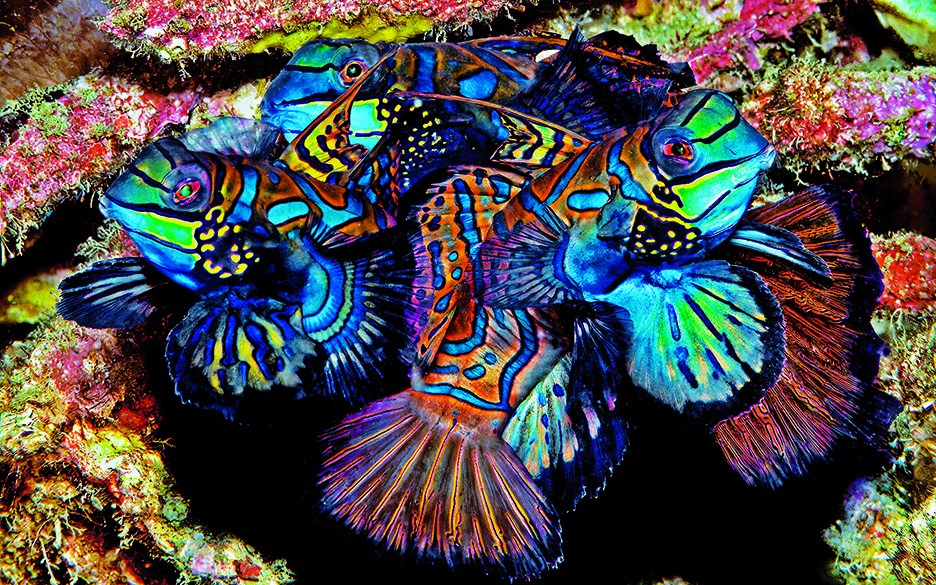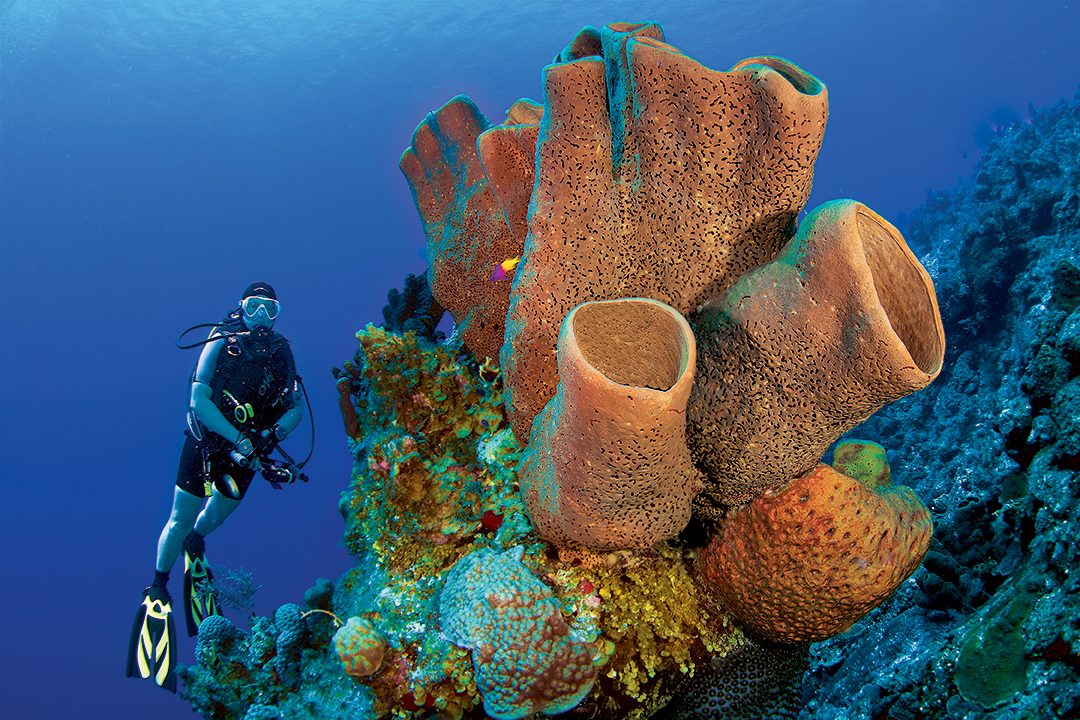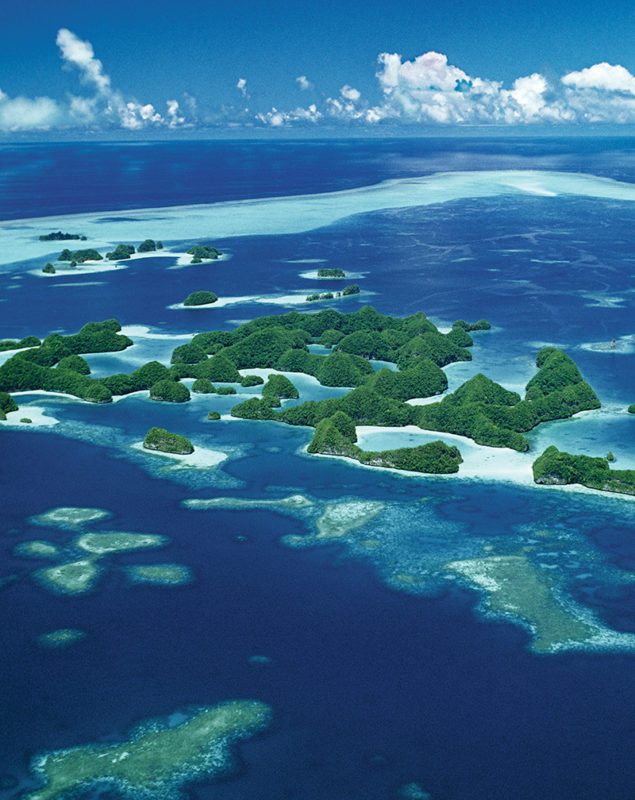THE QUESTION PEOPLE MOST FREQUENTLY ASK us about our years of dive travel involves our favorite place to dive. This can be a delicate topic, especially when visiting a resort with resident staff or management nearby. We unfailingly reply, “Where we’re diving now.”
DIVING IN THE TURKS AND CAICOS ISLANDS guarantees plenty of beauty and excitement. This British overseas protectorate entices tourists with the slogan “Beautiful by Nature.” The Caribbean waters throughout the islands offer breathtaking vertical walls, frequent close encounters with pelagics, and opportunities to observe an incredible diversity of fascinating marine life.
I WAS READING SYLVIA EARLE’S FOREWARD TO Our Ocean, Our Future: Palau, a lovely coffee-table pictorial book by Michael Aw, David Doubilet, and Jennifer Hayes. Earle opened by remarking on when she’s asked about the best place to go diving. Her usual answer is, “Almost anywhere, 50 years ago.”
DIVING IN TOBAGO is defined by the abundance and diversity of marine life in its surrounding waters. Tobago, one of the two islands comprising the Republic of Trinidad and Tobago, is about 30 miles long and more than 10 miles across at the widest point. It is geographically unique because of its location where the Atlantic Ocean meets the Caribbean Sea.
WHEN I THINK OF PARADISE, it’s warm blue water, friendly people, and pristine, uncrowded dive sites. Such places are rare these days and are usually expensive to visit — or that’s what I thought until I learned about St. Eustatius, a tiny island in the Caribbean that is also known as Statia. Nestled between Saba and St. Kitts in the Dutch Caribbean, Statia is just a short flight from St. Maarten.
THE CRYSTAL-CLEAR EASTERN ADRIATIC SEA is promising and seductive. The tiny islands, with their rocky beaches, upright cliffs, and hidden lakes, offer a variety of environments and ecosystems that are among the Mediterranean’s most intact and pristine. The southern part of the Adriatic’s Croatian side has steep, rocky plateaus with plenty of bridges, cracks, and caves. The sea has opened gaps in the porous rocks, carving and shaping cathedrals entirely built of limestone.
As a diver and photographer, I seek remote locations offering unparalleled underwater experiences. The farther away and the fewer the people, the better. Papua New Guinea is such a place.
Great white sharks are capricious fish. They are iconic, impressive, photogenic, and awe-inspiring but also frustrating. That frustration is not all about the animal — part of it is how few places in the world you can go to see them.
Our explorations of Belize’s equally biodiverse jungles and reef systems some 4,000 miles (6,437 kilometers) south repeatedly reminded me of that endless summer afternoon in Alaska.
The spectacular ecosystem of Indonesia’s Raja Ampat offers ample opportunities for fish portraits and macro shots with a 100mm lens, but the broad expanses of pristine hard corals punctuated with colorful soft corals and sea fans made it difficult for me to forego using my wide-angle lens during a recent liveaboard trip.



